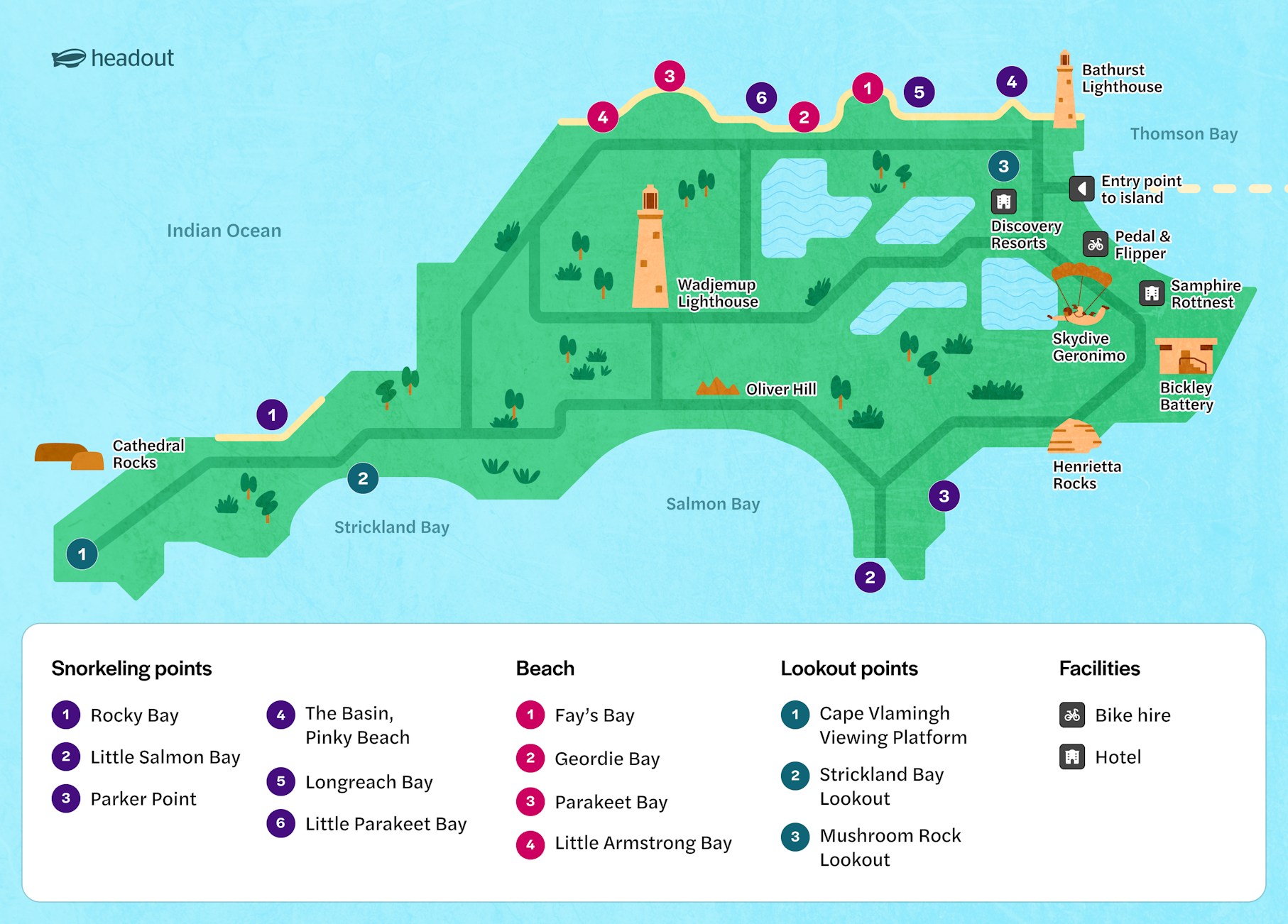These curious marsupials often wander right up to visitors. Snap a picture with them because they have mastered the art of posing for a selfie.
Rottnest Island map

Rottnest Island is Western Australia’s ultimate coastal escape. With over 60 beaches, 20 bays, and scenic nature trails, it’s perfect for a full-day adventure on foot or by bike.

Try skydiving over the island if you’re up for an adrenaline rush and don’t mind a little splurge. Explore the historic Oliver Hill tunnels, or cycle to the West End to see New Zealand fur seals basking on the rocks. You can also join a cultural walking tour to learn about the island’s Aboriginal heritage and stories connected to Wadjemup (Rottnest’s traditional name).
A full-day trip (7–9 hours) lets you experience the highlights comfortably. You can swim, cycle, spot quokkas and enjoy local cafés. If you want to explore every corner, stay overnight to see the sunset and stargaze after the crowds leave.
Yes! Most visitors mix two or three experiences in one day. For instance cycling + snorkeling, or bus tour + lighthouse visit + beach time are the popular combinations. Start early to make the most of your ferry schedule and avoid rushing between stops.
Focus on the island’s essentials:
Winter brings fewer crowds and a peaceful atmosphere. Go for coastal hikes, guided heritage tours, or birdwatching at the island’s wetlands. The cooler weather is perfect for cycling, and you might spot humpback or southern right whales migrating offshore between June and August.
Quokkas are found all across Rottnest Island, but your best chances are near Thomson Bay Settlement, The Basin, and around the main settlement area in the late afternoon.

From Fremantle: Rottnest Island Return Ferry
Rottnest Island Ferry and Bike Day Trip
From Perth: Rottnest Island Return Ferry
Rottnest Island Guided Bus Tour with Return Ferry
From Hillarys: Rottnest Island Return Ferry
From Perth/Fremantle: Rottnest Island Segway Tour with Return Ferry
Tandem Skydive at Rottnest Island
Rottnest Island Skydive and Ferry Tour from Perth/Fremantle/Hillarys
Perth & Rottnest Grand Scenic Flight
From Fremantle: Rottnest Island Return Ferry with Bike or Bus Tour Options